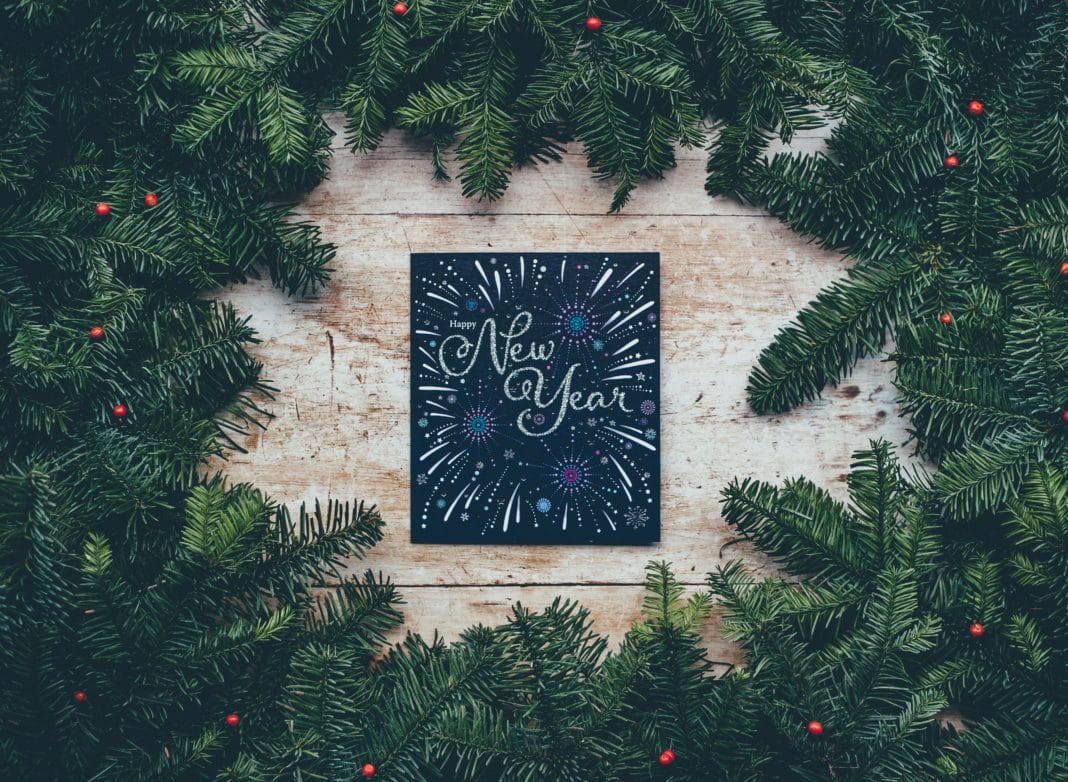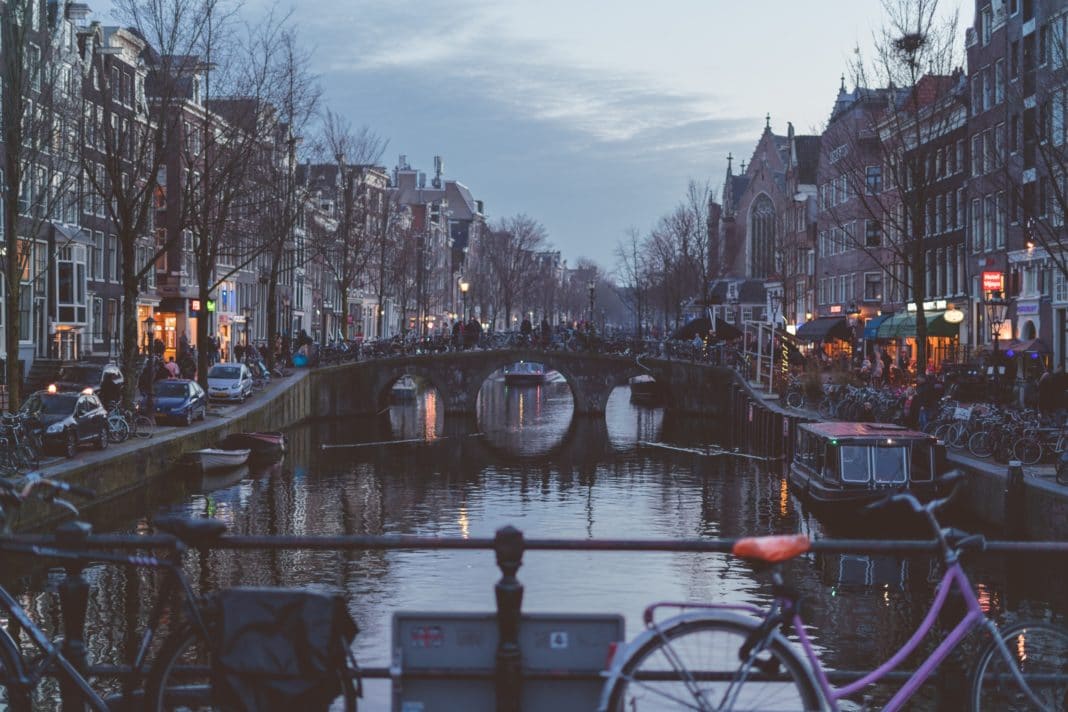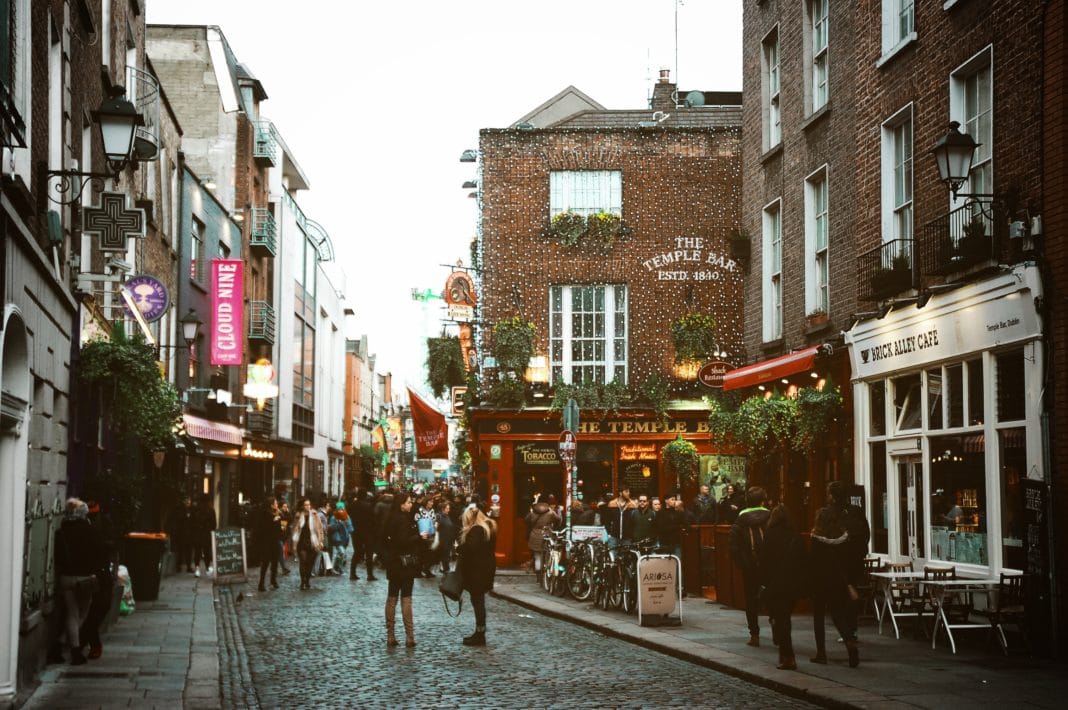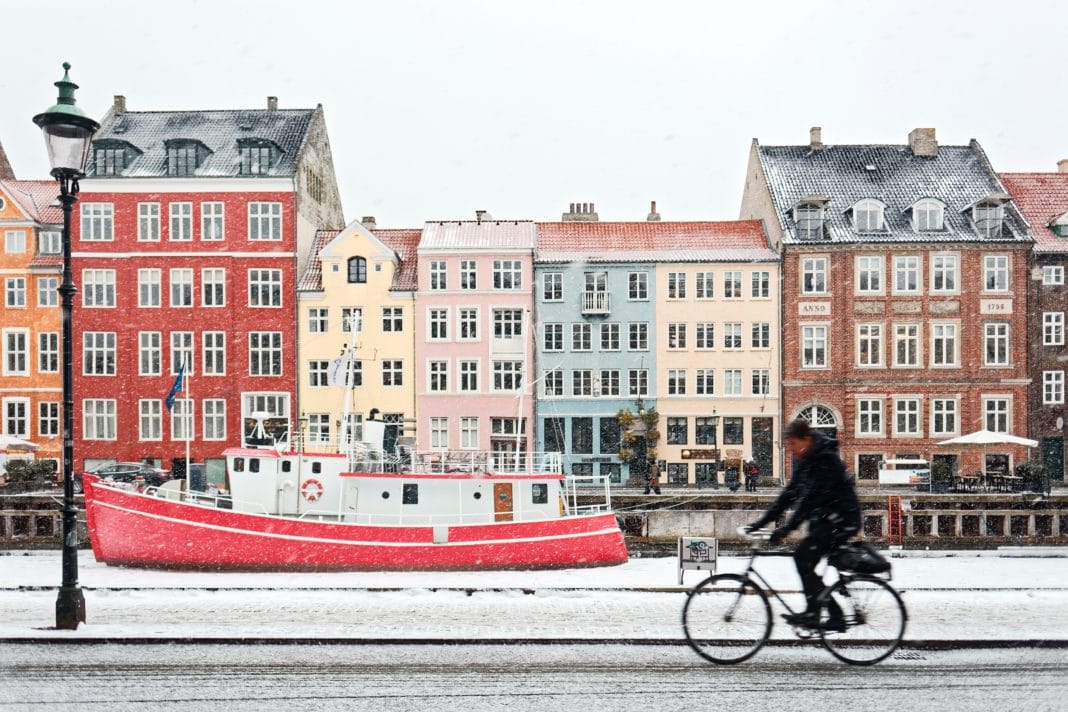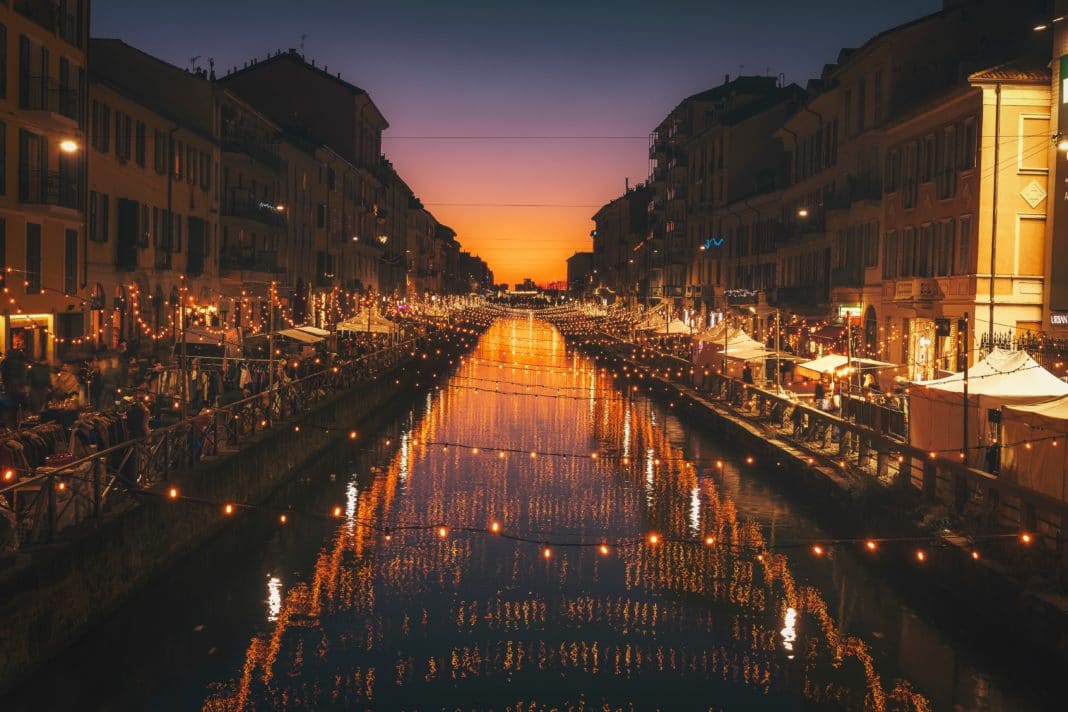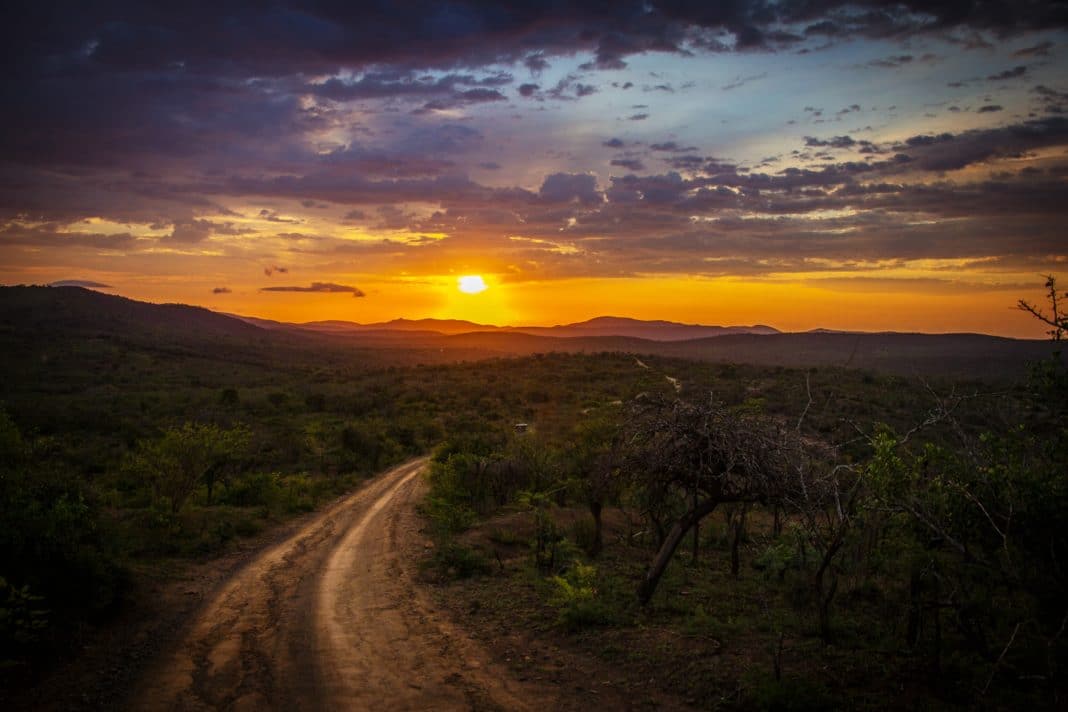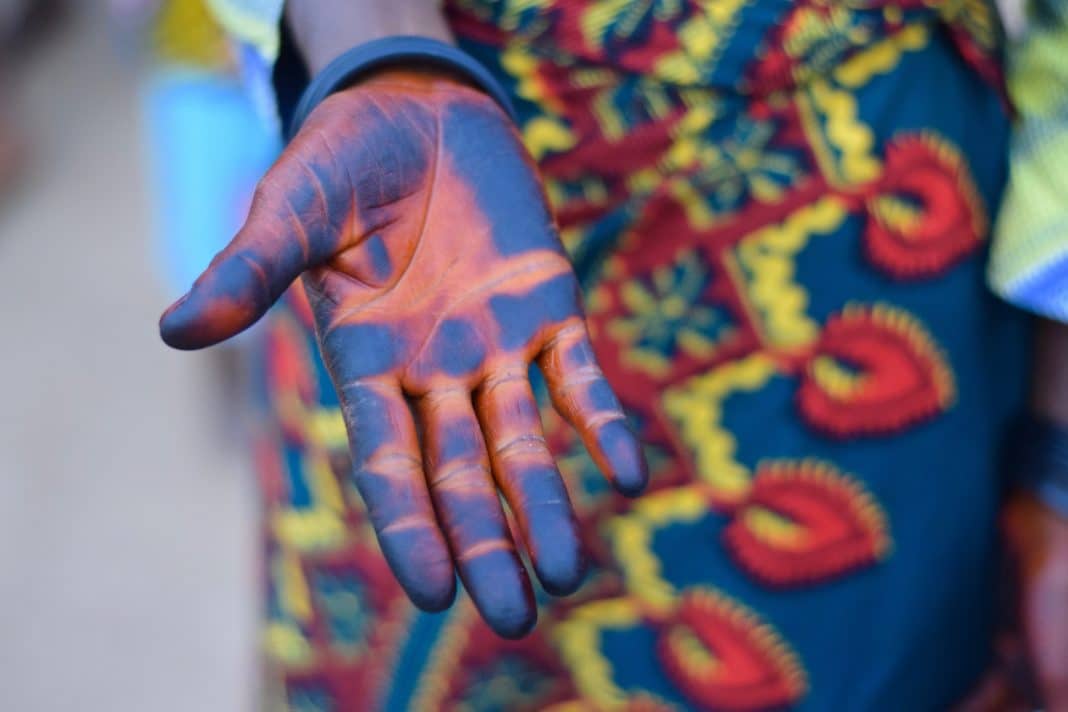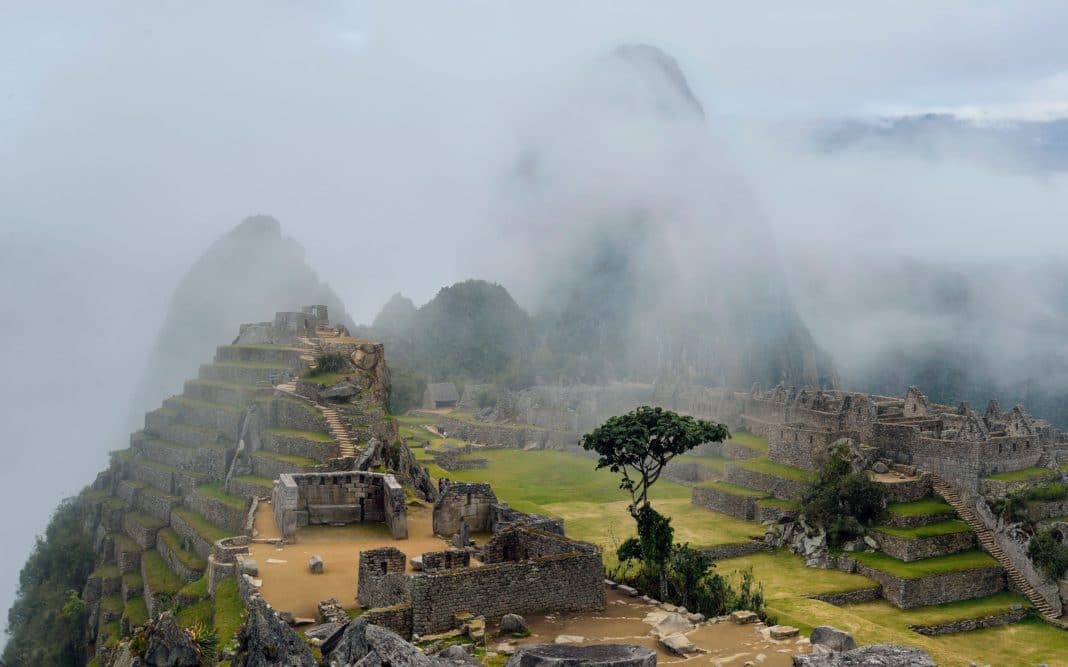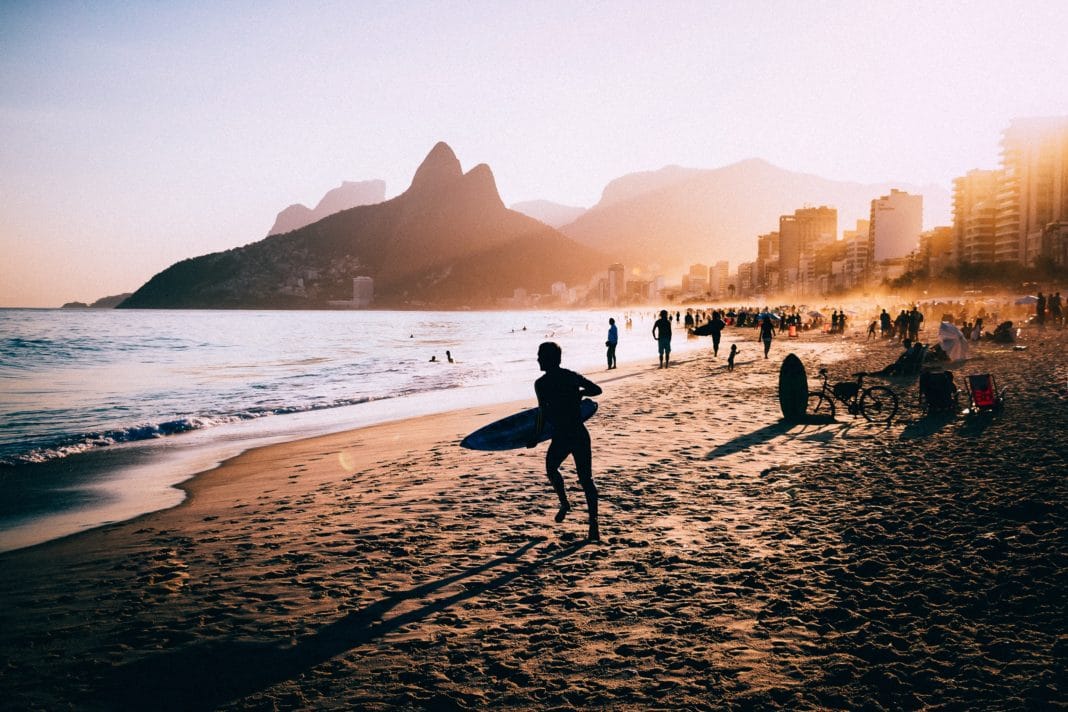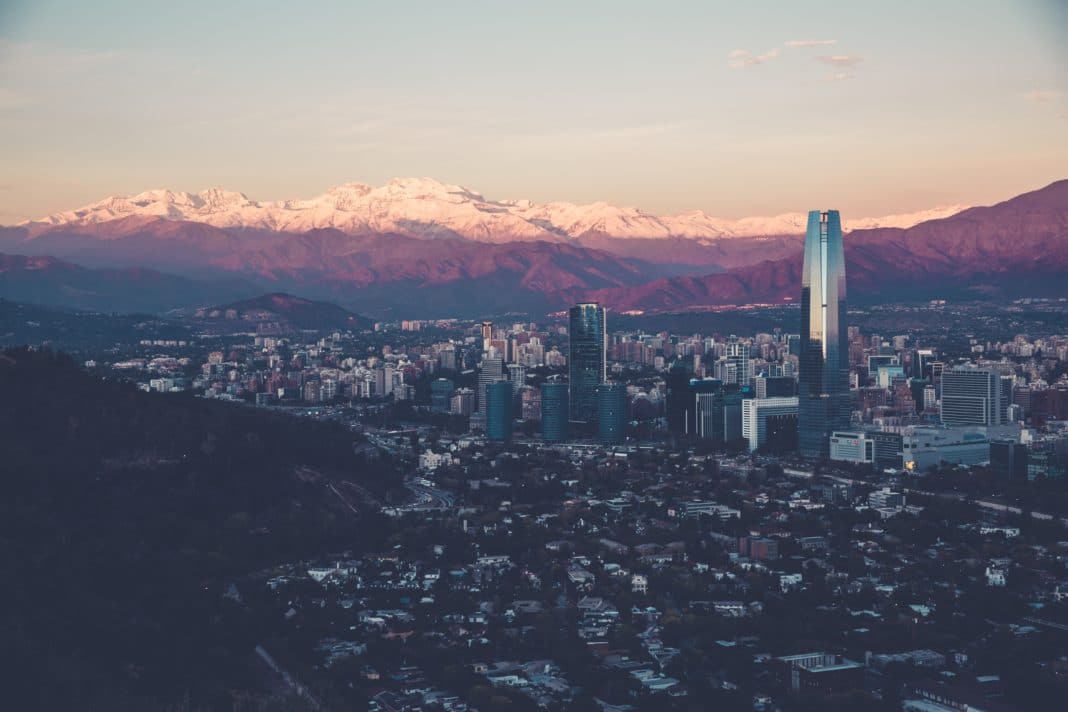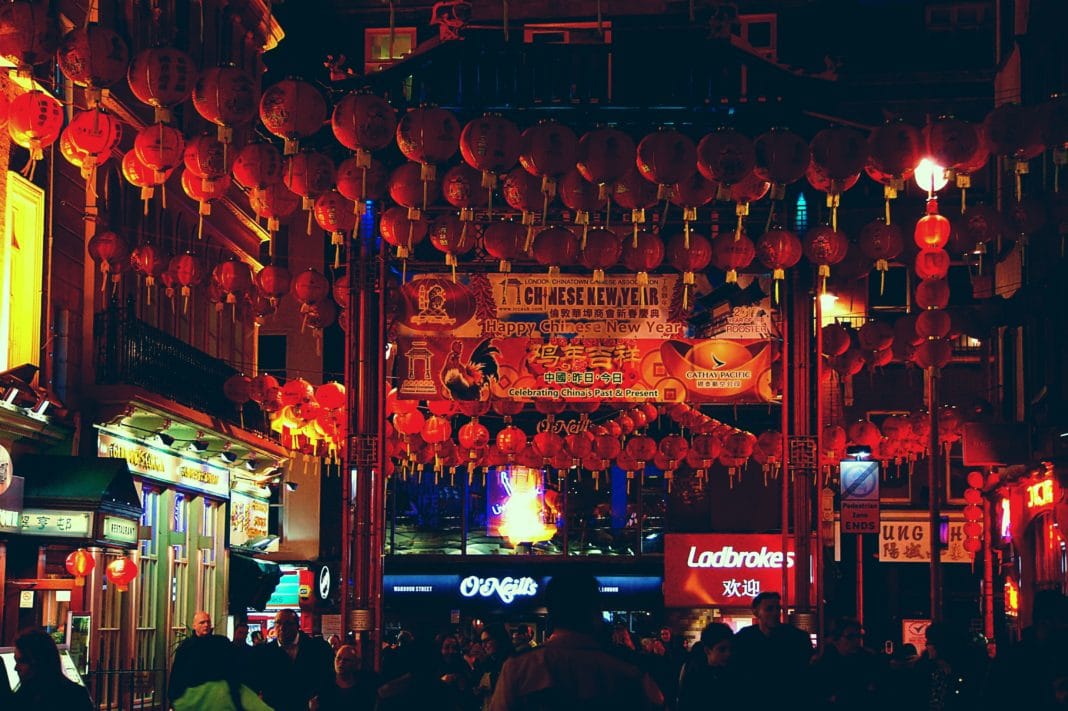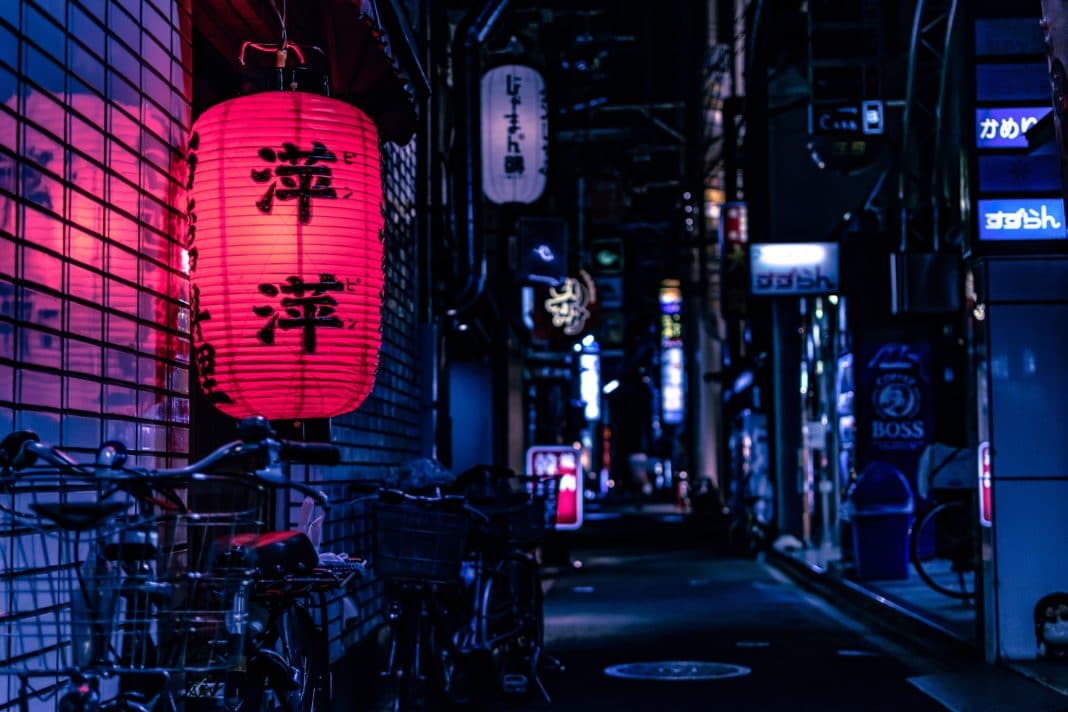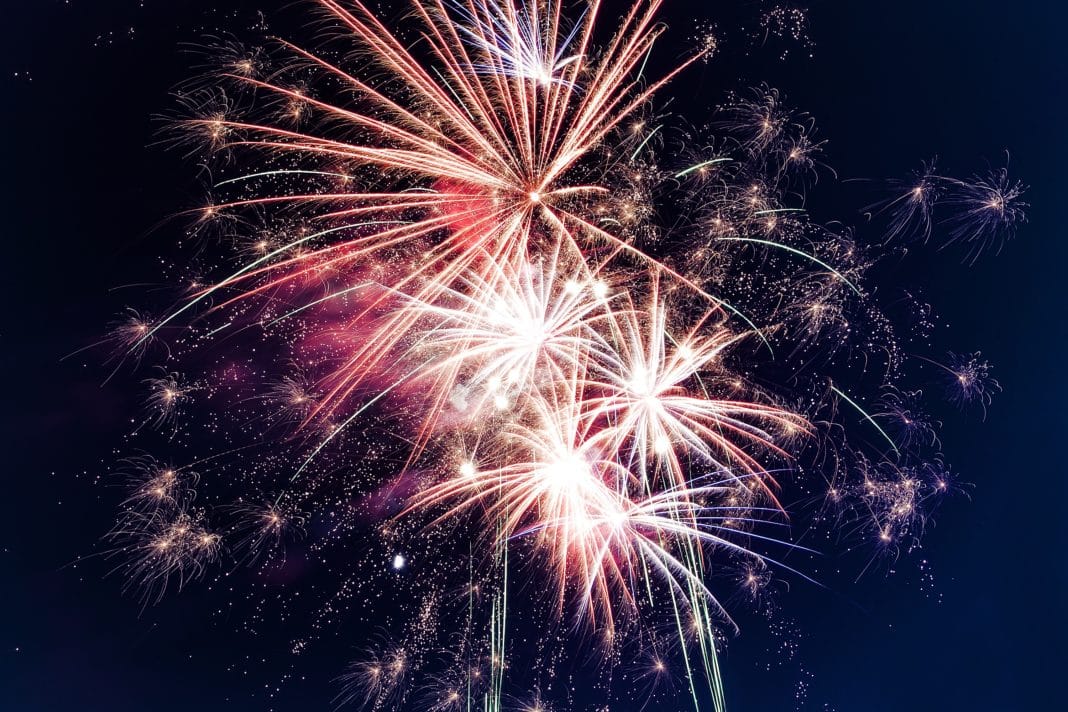New Year's traditions vary greatly around the world.
Christmas is over. And that means it's time to move onto the next holiday: New Year's Eve. Did you know that more people celebrate New Year's Eve around the world than any other holiday? It's true! And because so many different cultures take part in the event, there is unsurprisingly a large amount of New Year's traditions celebrated across the globe. Some cultures use the event as an excuse to eat delicious food. Others throw out old belongings to make room for the new. And some don't even celebrate their New Year's traditions until later on in the year.
Whatever your New Year's traditions are, it can be fun to learn about how other cultures celebrate the day. Read on for a look at how different people around the world ring in the new year. Who knows? Maybe you will find something along the way to bring in to your own New Year's traditions.
A History Of New Year's Eve
The earliest recorded New Year's festivities date as far back as 4,000 years to ancient Babylon. For the Babylonians, the first new moon following the vernal equinox — a day in late March that has an equal amount of sunlight as it does darkness — signaled the start of a new year. The Babylonians would mark this event with a massive religious festival called “Akitu.” The event lasted for a total of 11 days. And a different ritual would take place each day of the festival.
However, it wasn't until ancient Roman times that January 1st became known as New Year's Day. Originally, the early Roman calendar consisted of 10 months and 304 days total. It wasn't until the eighth century B.C. that January and February were added into the calendar. And it wasn't until much later that Julius Caesar would establish the more modern Gregorian calendar that most countries still use today.
With the establishment of the Gregorian calendar came the start of more modern New Year's traditions. That is when cultures began ringing in the new year on December 31st.
Europe
A lot of New Year's traditions in Europe are similar to those in America. In many countries there is still a lot of partying, a lot of eating, and a lot of fun. And yet there are still a few New Year's Eve customs that you won't see happening in Times Square on December 31st.
1. England
England also celebrates the New Year starting on the evening of December 31st and into January 1st. Today Englanders have begun celebrating more modern New Year's traditions such as setting off fireworks. However, more traditionally in England, New Year's traditions were much different than those found in the United States. At the stroke of midnight, people would open their back door to “let the old year out.”
At the same time, you are to ask the first dark haired man that you see to come through the front door carrying salt, coal, and bread. This is so everyone in the house will have enough to eat (bread), enough money (salt), and will be warm (coal) in the new year.
2. Scotland
In Scotland, the celebration of New Year's Eve is called “Hogmanay.” This word is derived from a kind of oat cake that was traditionally given to children on New Year's Eve. You will quickly realize that New Year's traditions in Scotland are some of the most fun customs across the globe. In Edinburgh, New Year's celebrations always include a massive party from Prince's Street to the Royal Mile and Edinburgh Castle. However, due to overcrowding in year's past, partygoers must now attain a ticket to attend the event.
The next Scottish New Year's tradition happens at the stroke of midnight. Once the clocks strikes on the new year, the tradition of “first footing” is observed. The first person to set foot in a home in a New Year is thought to profoundly affect the fortunes of those who live there. And traditionally, strangers are thought to bring the most luck! But depending on the area, it is better to have a dark or a light haired stranger enter your home.
3. Wales
New Year's Eve is called “Nos Galan” in Welsh. People in Wales also believe in “letting out the old year” and “letting in the new” via the first visitor to step in their home. But the biggest difference is that a woman must be the one to let the first person inside the home. If a man opens the door to the first person of the new year, it is considered bad luck. And it's considered even worse luck if the man who opens the door has red hair!
In addition, people in Wales believe that all debts should be paid off before the New Year begins. This is to avoid entering a whole new year of debt. And on New Year's Day, which is called “Dydd Calan” in Wales, children wake up early to sing songs to their neighbors. The children are given money and sweet treats in exchange.
4. Ireland
One of the most popular New Year's traditions in Ireland is to clean. That is, before going out and celebrating on December 31st, Irish people make sure their entire home is spotless. This may not sound like the most fun New Year's tradition. But there are still plenty others to enjoy, like throwing bread at the walls when it gets close to midnight to chase off evil spirits!
After the cleaning and the bread-throwing, Irish people often get together for a special dinner to reminisce on old family and friends. And to honor loved ones who have passed away, it is tradition to leave the door unlocked and set a place for them at the table.
5. Germany
Many New Year's traditions in Germany are similar to those you will see in Times Square. In fact, Berlin is home to the largest New Year's Eve celebrations in all of Europe! On December 31st, millions of people will celebrate “Silvester.” This consists of many parties, fireworks, and drinking a bunch of Sekt, or German sparkling wine. These are just some German traditions we love.
A common German New Year's tradition to celebrate at home is to melt lead by holding a flame under a tablespoon. Families then pour the lead into a bucket of water. And the pattern that takes shape in the water is said to predict what will happen in the new year. If the lead makes a heart or a ring shape, then you can expect a wedding. A ball signifies that your luck might roll away. And a pig shape means you and your family will have enough to eat in the new year.
6. Denmark
People in Denmark party it up just as much as Americans do on New Year's Eve. Before the evening's festivities begin, it is tradition for the people of Denmark to listen to the Queen's speech before heading over to the Royal Palace in Copenhagen to hear the clock's chime at midnight. But it's also customary to shatter old dishes and platters on New Year's Eve. Another New Year's tradition in Denmark is to climb on top of chairs and literally jump into the New Year as the clock strikes midnight.
7. Estonia
There is never a shortage of food at a New Year's Eve celebration in Estonia. One of the many New Year's traditions in Estonia is to eat seven, ten, even twelves meals throughout the day. This is done with the goal of having an abundance of food and wealth in the new year. Seriously, eating is highly encouraged during New Year's celebrations in Estonia. The saying “the diet starts tomorrow” is not more true in any other country.
In fact, it's considered good luck in Estonia if you enter the new year a pound or two heavier than you were in the old. But don't worry; you don't have to eat everything on your plate. Another one of the commonly celebrated New Year's traditions in Estonia is to leave some food on your plate for your ancestral spirits to enjoy.
8. Spain
New Year's traditions from Spain are unlike any you have seen before. As midnight nears on Nochevieja, or “old night,” AKA the last day of the year, the entire country gets ready… With a bowl of twelve green grapes. As soon as the clock strikes twelve into the New Year, Spaniards across the country accomplish las doce uvas de la suerte. In other words, they each eat twelve green grapes. Once they have finished their grapes, they shout “¡Feliz Año Nuevo!”. If you eat all 12 by the end of the final bell's toll — and that doesn't mean finishing with a half-chewed mouthful — then you will have good luck in el año nuevo.
This popular New Year's tradition is about a century old. But it's hard to say exactly when and where it began. After the grapes come the cheek kisses, toasts with glasses of cava, and pieces of turrón, almond and honey nougat from Alicante. And of course, there is more dancing and partying late into the early morning of the new year.
9. France
French people don’t send Christmas cards; they send New Year’s greeting cards instead. This is probably one of the most popular French New Year's traditions that has stayed strong today. But if it's getting close to December 31st and you still have yet to send cards to friends in France, don't fret. People in France continue wishingeach other la bonne année all throughout January. Additionally, it is a popular French New Year's traditiont o give money, or etrennes, to people who serve you on a regular basis. So this could be your mailman, a teacher, a police officer, your garbage man, etc.
And at the stroke of midnight on New Year's Eve, people all over France kiss one another on both cheeks and say bonne année! Unlike in America, fireworks are not commonplace during French New Year's. Instead, people tend to gather in smaller groups at family and friend's houses.
10. Italy
Italians tend to kick off New Year's Eve with a delicious dinner. Historically, the New Year's Eve dinner includes zampone e lenticchie, or pig’s trotter and lentils. In fact, this dish is such a popular Italian New Year's tradition that many supermarkets begin selling pre-packed dishes starting in mid-November. Next comes the pots and pans. To banish previous bad luck, Italians have an “out with the old, in with the new mindset.” But it can be a bit extreme, as they will toss things like old pots and pans, clothes, and other unwanted items out the upstairs window. However this New Year's tradition is particularly common in Southern Italy. Similarly, in parts of northern Italy, it’s customary to banish malignant auras by smashing crockery outside the front of your house.
And finally, the fireworks. On New Year's Eve, almost every Italian town comes alive with fireworks. As with many other countries, Italians celebrate the new year with bright lights, loud music, family, and friends. It's a celebration to remember every year.
Australia
The biggest difference between an Australian New Year's Eve and one in America is that Australians celebrate their new year in the summer. And that's why January 1 consists of beach parties, water sports, and plenty of outdoors activities. But the New Year's celebrations don't stop there. In fact, it's common for New Year's traditions and festivities to be carried out for a period of six days in Australia, with January 6 being the last day of celebrating.
However, similarly with America and many other countries, fireworks mark the start of the new year in Australia. And the most elaborate fireworks show happens at midnight in the Sydney Harbor.
Traditionally, people in Australia pay a visit to church and offer their prayers before celebrating on December 31st. This is so they can receive their blessings for the New Year. In fact, the historical New Year's tradition in Australia states that the arrival of the New Year officially takes place with the twelves rings of the church bells at midnight. Fireworks shows are just an added perk to old traditions.
Africa
New Year's Eve is celebrated in Africa in much the same way that it’s celebrated in Europe or North America. There are fireworks, parties and countdowns to midnight. In almost any major African city (and plenty of smaller ones), you will find New Year’s Eve parties and events on December 31. But still, there are New Year's traditions that are particular to certain African countries. Let's take a look at a few.
1. South Africa
South African New Year's traditions are all about the phrase, “out with the old and in with the new.” Therefore it is customary on New Year's Eve to throw old furniture out the window and out on the streets. Though this is not as common of a New Year's tradition today, don't be surprised if you wake up on January 1st to furniture lining the streets.
Instead, people in South Africa more commonly celebrate with fireworks displays and all-night parties. Sound familiar? But the most epic New Year's Eve party in all of South Africa can be found in Cape Town. Every New Year's Eve in Cape Town, there is a huge carnival with singing, dancing, bright clothes, face paint, and more.
2. Nigeria
Similarly in Nigeria, New Year's celebrations involve elaborate parties where friends and family exchange wishes and offer prayers. The city of Lagos holds many masquerade parties on New Year's Eve. Some of these include the Calabar Carnival and Lagos Countdown. During these events, people dress in animal masks and dance in the streets. This New Year's tradition symbolizes good luck and cheerfulness and wards away evil energy and negativity in the New Year.
But that's not all. The best part about New Year's traditions and celebrations in Nigeria is that they last for 20 days. Yup, you heard it right. 20 days! People in Nigeria begin celebrating the New Year as early as December 7th and continue into the early morning of January 1st.
3. Zimbabwe
Zimbabwe is another African city that celebrates the New Year for more than one night. One of the biggest New Year's events in Zimbabwe is the Vic Falls Carnival. This is a three-day long event that includes lives performances, fireworks, food, and other fun festive activities.
If you are in Zimbabwe for the Vic Falls Carnival, expect to see fire breathers, traditional dancing, and the Carnival Train. This train takes guests to a secret rave inside the Victoria Falls Wildlife Park. It's truly a celebration you will never forget.
4. Senegal
New Year’s Eve is a joyous occasion in Senegal. And it is most widely marked by the Le Fanal Festival. During this event, lanterns are lit and paraded down the street as people sing and drum. People in Senegal also dress up in extravagant costumes to celebrate the New Year.
Additionally, there is the annual Abéné Festivalo, a 10-day drumming festival that begins at the end of December and extends all the way to January. Another common New Year's tradition in Senegal is to watch wrestling matches, whether they be professionally done or between friends.
5. Ethiopia
Ethiopia hosts a much different New Year's celebration. And that's largely due to the fact that Ethiopia is one of the only countries in the world that doesn't follow the Gregorian calendar. In other words, Ethiopia recognizes a 13th month of the year. Therefore, December 31st is not technically the last day of their year.
Instead, people in Ethiopia celebrate the new year on September 11th with parties and festivals. This event is known as Enkutatash, which translates to “gift of jewels.” The New Year's tradition dates back to the days of when the Queen of Sheba went on a trip and was gifted with jewels upon her return. And today, children still receive small gifts during New Year's celebrations.
North America
You probably already know how most people in the United States celebrate New Year's Eve. And you definitely know what the most iconic American New Year's celebration is: counting down to midnight in the bitter cold Times Square on December 31st. So let's discuss some other New Year's traditions and celebrations seen throughout North America.
1. Mexico
In Mexico, the Año Neuvo is a time of embracing renewal. And to do so, a common New Year's tradition in Mexico is to throw buckets of water out the window. People also open the front door to symbolically sweep out the old year and welcome in the new. Another New Year's tradition that families practice in Mexico is to toss coins onto the ground and sweep them back into the house. This is to signify wealth and prosperity in the new year.
And of course, there are many parties. There's a whole lot of dancing. And can anyone really celebrate the new year without a firework or two? In addition, it is a Latin American custom to burn scarecrows at the start of the new year.
2. Puerto Rico
In tandem with other Latin cultures, people in Puerto Rico also throw buckets of water out their windows on New Year's Eve. This New Year's tradition is done to drive away evil spirits. And just like those celebrating in Spain, people in Puerto Rico eat twelve grapes at the strike of midnight. Puerto Rico also shares the Irish New Year's tradition of cleaning everything – their house, their cars, their gardens, the streets, etc. They do this to start the New Year with a clean slate.
And, to encourage luck in the new year, families in Puerto Rico sprinkle sugar outside of their houses. There are also many traditional Puerto Rican dishes served on New Year's Eve, including arroz con gandules, pasteles, roasted pig, coquito, and rice pudding.
3. Canada
Canadian citizens celebrate New Year's Eve similarly to their American neighbors. There is a whole lot of dancing, live music, drinks, and of course, fireworks. And if you're feeling particularly brave on New Year's Eve, you can take part in an old Canadian tradition to do a “polar bear plunge.” In other words, jump into freezing waters. This is often done to raise money for charities.
One of the biggest New Year's celebrations and fireworks shows happens at Niagara Falls. Watching fireworks light up the sky over the falls is a gorgeous site. But no matter where you're celebrating the new year in Canada, you're bound to have a great night.
South America
You will see some similarities in New Year's traditions in South America as you will in other Latin cultures. But South America has one major advantage over other countries on New Year's Eve: they have warm weather. And that is a huge game changer.
1. Ecuador
At the annual Años Viejos, the people in Ecuador burn scarecrows at midnight. As you read earlier, this is also a custom some people carry out in Mexico. In Ecuador, the scarecrows are filled with paper or sawdust. And they are usually modeled after a public figure that people believe wronged them in some way during the previous year.
This New Year's tradition originated in Guayaquil in 1895. In that year, a yellow fever epidemic hit the town and coffins packed with the deceased’s clothes were burned for purification. Additionally, people in Ecuador burn photographs from the previous year in the name of good fortune and starting over in the new year.
2. Brazil
People in Brazil are lucky. They can always expect warm weather on New Year's Eve. And that definitely makes one of their most popular New Year's traditions easier to carry out. In Brazil, it’s considered good luck if you can jump over seven different waves while making wishes, making one wish for each wave.
In addition, Brazilians enjoy fireworks shows on Rio de Janeiro’s shores. And they usually watch these shows while eating lentils, which signifies wealth in the new ear. If you're in Brazil on New Year's Eve, you will likely see most everyone wearing white. THat's because it is believed that wearing white on New Year's Eve will bring good luck and peace in the New Year. But wait, there's more! People in Brazil burn things too: a life-sized doll with a face mask that represents bad events from the past year.
3. Peru
As with other countries you have read about on this list, Peruvians celebrate the new year with grapes, fireworks, and traditional food. But they have one New Year's tradition that is entirely their own. And it involves putting three potatoes under a chair. One potato is peeled, another is partially peeled, and the third has all its skin. At the stroke of midnight, a person chooses a potato with their eyes closed. Each potato carries a different prediction for the new year.
If you get the one with skin, you’ll be prosperous. The partially peeled potato means you'll have an average, uneventful year. And the potato with no skin predicts that you are destined to have no money in the new year.
4. Chile
Many New Year's traditions in Chile are carried out in honor of family and friends who have passed away. Families in Talca often spend the night in the cemetery with their loved ones. Beforehand, families get together for a New Year's dinner. The menu typically includes a stuffed turkey or another kind of meat.
When the clock strikes midnight in Chile, you are sure to see fireworks going off in the sky. And many families tend to bring along snacks, drinks, and light small fires next to the graves of their loved ones as they ring in the new year.
Asia
Many New Year's traditions in Asia are unlike any other on this list. And some Asian countries don't even celebrate New Year's Eve on December 31st. Read on to this last bit of the article to get a feel for some popular New Year's traditions carried out in Asia.
1. Thailand
Even though Thailand and South American cultures differ in so many ways, they are alike in some. And that includes the New Year's tradition of throwing buckets of water out the window on New Year's Eve. But this Thai tradition also includes smearing each other with gray talc during Songkran. The talc represents the sins of the previous year, and the water washes away all wrongdoings. As in other countries, they also play games, eat traditional foods, and spend quality time with family.
2. China
China is one of the countries in Asia that does not celebrate New Year's Eve on December 31st. Instead, the Chinese New Year celebration occurs anywhere between late January and the third week of February. Chinese New Year's traditions consist of parades with dancing dragons and lions, which represent longevity and wealth. People throughout China also light plastic firecrackers to set off loud noises on New Year's Eve. This is done to ward off evil spirits in the new year.
Another popular New Year's tradition in china is for families to give out “lucky money” to loved ones. This money is put in red envelopes with their family name and a good luck message written on the front in gold.
3. South Korea
One of the most popular New Year's traditions and celebrations in South Korea are “sunrise festivals.” This event is most common in seaside South Korean towns. During the festivals, people get together to watch the first sunrise of the New Year. And if you make a wish as the sun rises for the first time in the new year, your wish will come true. Other people write down their wishes for the new year and put them in balloons or laterns. These are then released into the sky.
And if you are in South Korea on New Year's Eve, you will see many people wearing hanboks. This is traditional New Year's garb that helps people in Korea reconnect with families. South Koreans are also known to make duk gook rice cakes or dumplings to offer to their ancestors on New Year's Day.
4. Japan
In Japan, New Year’s Eve, or Oshogatsu, is marked by all the bells in the entire country getting rung 108 times. This is done out of a Buddhist belief that encourages cleanness in the new year. Another popular New Year's tradition in Japan are three-day festival celebrations. During this time, people get together to play games, eat food, and enoy time with family.
On New Year's Eve, people in Japan will place kadomatsus, or pine branches, bamboo, and plum twigs, outside their homes. One kadomatsus is placed on either side of the entry way to welcome good spirits. And as in China, children in Japan are given otoshidamas. These are small gifts or decorated envelopes with money inside. These New Year's traditions are just the start of interesting facts to know about Japan.
One of the best parts about traveling on New Year's is to experience new traditions.
There are so many incredible New Year's traditions out there to explore! Whether you have grown up celebrating some of the traditions mentioned above or not, we encourage everyone to celebrate New Year's Eve in a foreign country at least once. After all, the best part about traveling is to experience new cultures and their traditions.
Do you have any special New Year's traditions that you celebrate with your family? Please leave us a comment and let us know! We are eager to hear how everyone celebrates the new year across the world.
Related Article: The Bahamas Are A Number One New Year's Destination


